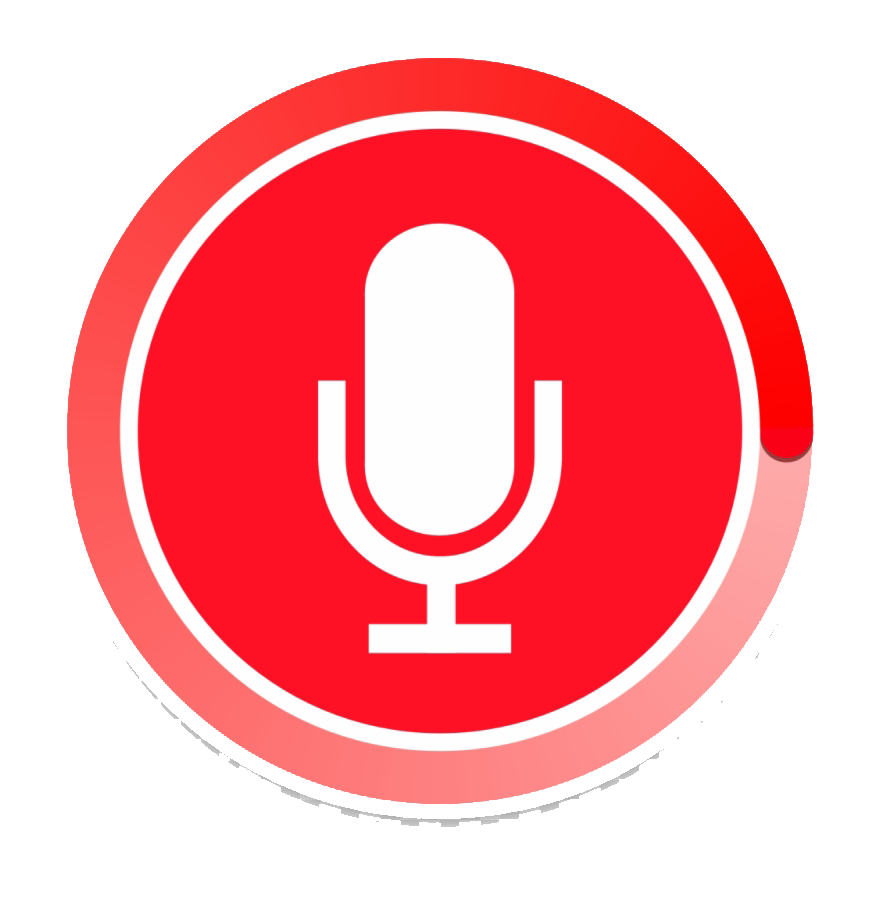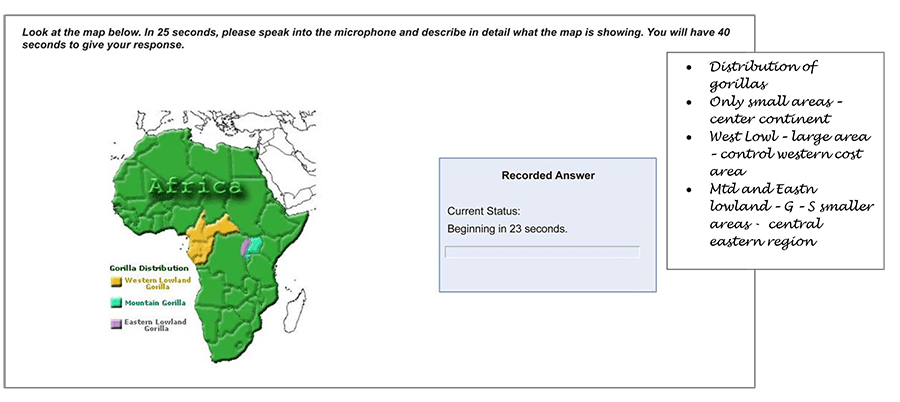
 About Describe Image
About Describe Image- Task - An image appears on the screen. Describe the image in detail.
- Skills assessed - Speaking
- Prompt length - N/A
- Time to answer - 40 seconds
The recording status box displays a countdown until the microphone opens. You have 25 seconds to study the image and prepare your response. You hear a short tone. After the tone, start speaking immediately. Do not start speaking before the microphone opens because your voice will not be recorded.
You should speak clearly. There is no need to rush. Finish speaking before the progress bar reaches the end. The word “Recording” changes to “Completed’’. You are only able to record your response once.
 Test Tips:
Test Tips:Focus on the main information in the image:
When studying the image, consider the main idea and the details supporting it. For example, if the image includes stocks vector art and graphics, pay attention to how these elements are used to convey the message or information. Use your erasable noteboard booklet to note down key ideas and phrases that relate to the main information and the explanatory details. These can be put into sentences when you start to speak:

Organize your description of the image:
If you organize what you say, you will get a better score. This is because a well-organized answer is more likely to cover the main information as well as the additional details, and also talk about implications or conclusions based on the information. Look at how this sample description is organized:

 How this question is scored:
How this question is scored:Content: Does your response accurately and thoroughly describe the image? Content is scored by determining if all aspects and elements of the image have been addressed in your response. Your description of relationships, possible developments and conclusions or implications based on details from the image is also scored. The best responses deal with all parts of the image, contain logical and specific information, and include possible developments, conclusions or implications. Mentioning just a few disjointed ideas will negatively affect your score.
Oral fluency: Does your response demonstrate a smooth, effortless, and natural rate of speech? Oral fluency is scored by determining if your rhythm, phrasing, and stress are smooth. The best responses are spoken at a constant and natural rate of speech with appropriate phrasing. Hesitations, repetitions, and false starts will negatively affect your score.
Pronunciation: Does your response demonstrate your ability to produce speech sounds in a similar way to most regular speakers of the language? Pronunciation is scored by determining if your speech is easily understandable to most regular speakers of the language. The best responses contain vowels and consonants pronounced in a native-like way and stress words and phrases correctly. Responses should also be immediately understandable to a regular speaker of the language.
PTE Academic recognizes regional and national varieties of English pronunciation to the degree that they are understandable to most regular speakers of the language.
- Partial credit scoring applies to Describe Image. No credit is given for no response or an irrelevant response. This question type affects the scoring of the following: speaking, oral fluency, and pronunciation.
- Your listening and writing skills are not tested by this question type, and your reading skills are only used to read the instructions.
Source: https://pearsonpte.com
 Tips By ALFA:
Tips By ALFA:
Start with the introduction of the image.
Be thorough with the structure.
Highlight the key points, you do not have to explain anything, just read what you can see without any pauses.
Avoid using fillers like ‘umming’ and ‘urring’ while speaking. This will reduce your oral fluency and overall marks.
Don’t try to speak for a full 40 seconds. Stop before the 30 Seconds. This much time is enough to get 90.
No doubt “Content” is important, but keep in mind ‘Oral Fluency’ and ‘Pronunciation’ is more important.
Be natural and don’t try to add any new words which you are not comfortable with.
Practice your structure until you are perfect. Your response should be smooth and flawless.
Follow the steps given in the structure and check your score using the AI to get a clearer understanding.



